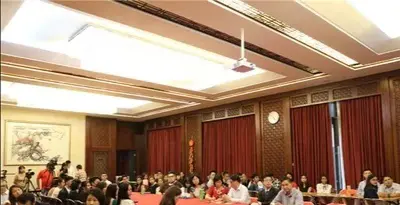By APD writer Melo M. Acuña
The most recent report on poverty statistics for the year 2018 registered a significant progress, “not just in terms of increasing overall income but also reducing inequality as well.”
National Economic and Development Authority Officer-In-Charge Adoracion M. Navarro in her remarks cited the report from the Philippine Statistics Authority that poverty incidence dropped to 16.6 percent of the population in 2018 from 23.3 percent in 2015.
“We are on track in meeting our targets set under the Philippine Development Plan 2017-2022,” she told members of the media and other government officials earlier today. She expressed optimism of bring poverty incidence to 14 percent by the year 2022 along with meeting the Sustainable Development Goal (SDG) target of eradicating extreme poverty by 2030.
Undersecretary Navarro added the government has almost reached the target to lift at least six million Filipinos out of poverty by 2022 because 5.9 million have already been taken out of poverty as of 2018.
She added the strategies emphasized in the Philippine Development Plan 2017-2022 has resulted in inclusive growth and needs to be sustained “if not further enhanced.” The significant reduction in poverty has been attributed to the improved labor market conditions which increased the salaries and wages of the poor.
The country’s vibrant economy continues to generate good jobs as mean salaries and wages of the population increased by 22.8 percent to P156,1114 in 2018 from P127,122 in 2015.
“For those in the bottom 30 percent of the population, mean per capita income increased by 31.87 percent. This outpaced the 18 percent income growth experienced by the top 20 percent of households. This is a good sign that our programs targeting the poor are working well,” she added.
The government’s sustained implementation, expansion and enhancement of its social assistance programs including the conditional and unconditional cash transfer and social pension provided additional benefits to the poorest sectors of Philippine society.
Undersecretary Navarro said the poverty gap or ratio by which the average income of the poor falls below the poverty line, and the severity of poverty, also consistently improved in 2018 from 2015. The poverty gap decreased to 2.6 percent from 4.5 percent while severity of poverty was reduced to 0.9 percent from 1.7 percent. According to the socio-economic planning department, these indicators show that incomes of the poor have increased.
“The broad-based decline in poverty incidence has eased disparities across regions,” Undersecretary Navarro said as all regions recorded a decline in poverty incidents among families with the exception of the Autonomous Region in Muslim Mindanao, now known as “Bangsamoro Autonomous Region in Muslim Mindanao”. The largest drop in poverty incidence was reported in Regions X (Northern Mindanao) and VII (Central Visayas).
She added there is a need to consider the constant displacement and insecure property rights brought about by conflict discourages private investments as it reduces incentives to establish businesses and generate employment.
“The peace-building efforts in the Bangsamoro Autonomous Region in Muslim Mindanao must be sustained,” she added. There is a need to improve the quality of education for Filipinos, especially the poor and disadvantaged with the recent PISA results released by OECD where Filipinos scored the lowest in reading, mathematical and scientific literacy, among 79 participating countries.
“We take the results as a major challenge,” Undersecretary Navarro said.
(ASIA PACIFIC DAILY)
 简体中文
简体中文

